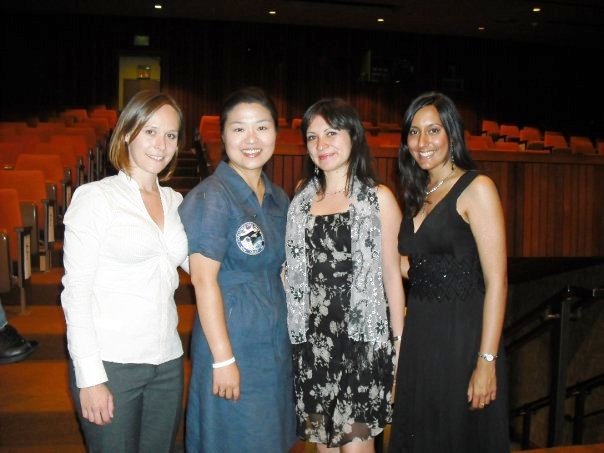Ada Lovelace Day (October 16th) is an event designed to raise the profile of female scientists, technologists, engineers and mathematicians. A day to bring attention and celebrate their achievements. Born in 1815, Ada Lovelace is considered to be the world’s first computer programmer! As the daughter of poet Lord Byron and Annabella Milbanke, she was encouraged by her mother as a child and taught math and science. She later worked with Charles Babbage using code-like language on the theoretical development of an “analytics engine”, similar to a computer. This was sadly never built as Ada passed away from cancer. Her notes however were used by Alan Turing in the 1940s for his work on the first modern computers. Starting in 2009, a group called Finding Ada led by Suw Charman-Anderson started a petition to call for a day of blogging about women’s achievements in STEM. Therefore every year on this day, blogs recognize powerful women the world over, paying special attention to women in the tech industry.
So this year I’ll be bringing attention and celebrating the achievements of women in the space industry, specifically those that I believe are inspiring others and a role model for women internationally. Two women who I think should be brought to attention are Sunita Williams and Dr.Soeyon Yi.
I’ve written about Sunita previously, but Sunita Williams is not just any astronaut, she holds the record for the longest single flight in space for a women and for the longest EVA duration for a female (cumulative). EVA Video
The previous record holder, Peggy Whitson, sent her a message to congratulate her on this accomplishment. She said, “Suni – Congratulations on being the female record holder of the most EVA time. It’s an honour to hand off the record to someone as talented as you.” Peggy ended the message with “You Go Girl!!” Suni replied saying that it was a matter of circumstance, time and place. Adding that, “Anybody could be in these boots.”
Sunita previously served in the Mediterranean, Red Sea, and Persian Gulf in support of Desert Shield as a helicopter pilot. She graduated from the U.S. Naval Test Pilot School in 1993 and continued to perform test flights in a variety of military helicopters. After completing her master’s degree in Engineering Management in 1995, she was stationed on the USS Saipan, where she was selected to be a NASA astronaut. On her career path she has previously said,
“Enjoy what you’re doing, you’ll naturally do well at it, and if [the opportunity to be an astronaut] comes up, it’s just a bonus.”
Whilst onboard the ISS in 1997, Sunita completed the Boston marathon in space using the ISS treadmill. She completed the 26.2 mile race in 4 hours, 23 minutes and 10 seconds. In addition to this, whilst on the ISS this year Sunita completed the Nautica Malibu Triathlon. She ran, biked and “swam” in space simulated using a treadmill, stationary bike and strength-training machine. The swimming portion of the race in microgravity used the onboard Advanced Resistance Exercise Device (ARED) to do resistance activities and weight training. NASA’s flight director in Mission Control congratulated Sunita for completing the triathlon and emphasised that it was “critically important to understand human physiology and how to keep you strong on orbit”.
![Sunita Williams completing a triathlon in space [slate.com] Sunita Williams completing a triathlon in space](http://www.slate.com/content/dam/slate/blogs/trending/2012/09/18/space_triathlon_completed_by_astronaut_saunita_williams/1347988276613.jpg.CROP.rectangle3-large.jpg)
The second female role model that I want to tell you about is Dr.Soyeon-Yi. Soyeon was South Korea’s first astronaut, selected from among 36,000 applicants and launched to the space station in 2008.
With a background in mechanical engineering and bio-systems, Soyeon currently serves as a senior researcher at the Korean Aerospace Research Institute (KARI) and an adjunct professor at the Korea Advances Institute of Science and Technology (KAIST). Whilst spending 10 days on the ISS, Soyeon conducted 18 scientific experiments, including an experiment that monitored the effects of microgravity on 1,000 fruit flies that she transported into space. She has also described the experiments to educate students and the younger generations as being the most meaningful and important, her first responsibility being to support the next generation and inspire the people of Korea. Soyeon’s Soyuz capsule, which she shared with NASA astronaut Peggy Whitson and Russian cosmonaut Yuri Malenchenko ,also underwent a ballistic re-entry on return to Earth. This entry at a steeper than normal angle, resulted in the capsule landing at a distance of 400 km from the intended landing site. Ballistic re-entry can expose crew members to gravitational forces exceeding 10 times that of Earth gravity as it relies solely on atmospheric drag to slow a spacecraft. The Soyuz nominal re-entry usually allows for some aerodynamic lift during re-entry, which provides a shallower and slower descent. Luckily the crew were safe and located 20-minutes post-landing.
Soyeon also carried out the International Space University (ISU) Space Studies Program (SSP) at NASA Ames Research Centre in 2009. I was lucky enough to meet her there whilst working as a Teaching Associate for the Physical Sciences department. She truly inspired each and every person involved in the program with her ambition and accomplishments.

